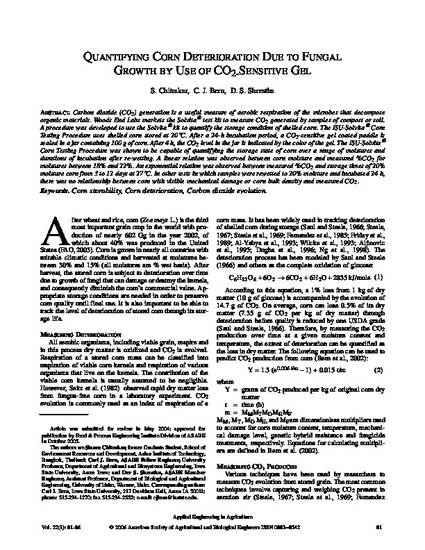
Carbon dioxide (CO2) generation is a useful measure of aerobic respiration of the microbes that decompose organic materials. Woods End Labs markets the Solvita. test kit to measure CO2 generated by samples of compost or soil. A procedure was developed to use the Solvita. kit to quantify the storage condition of shelled corn. The ISU-Solvita. Corn Testing Procedure uses shelled corn stored at 20.C. After a 24-h incubation period, a CO2-sensitive gel coated paddle is sealed in a jar containing 100 g of corn. After 4 h, the CO2 level in the jar is indicated by the color of the gel. The ISU-Solvita. Corn Testing Procedure was shown to be capable of quantifying the storage state of corn over a range of moistures and durations of incubation after re-wetting. A linear relation was observed between corn moisture and measured %CO2 for moistures between 18% and 22%. An exponential relation was observed between measured %CO2 and storage times of 20% moisture corn from 3 to 12 days at 27.C. In other tests in which samples were rewetted to 20% moisture and incubated 24 h, there was no relationship between corn with visible mechanical damage or corn bulk density and measured CO2.
Available at: http://works.bepress.com/cjbern/45/

This article is from Applied Engineering in Agriculture 22 (2006): 81–86, doi:10.13031/2013.20174. Posted with permission.